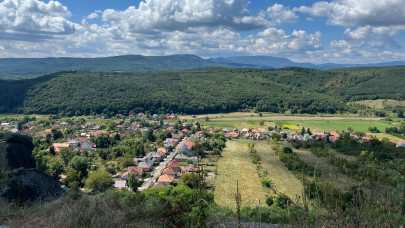There is every reason for the positive mood currently enjoyed by European agricultural machinery manufacturers. “For several months, we have been experiencing an economic comeback in numerous markets,” said VDMA Managing Director Dr. Bernd Scherer at the preliminary press conference of the world's largest industry trade fair, Agritechnica, which will be held in Hanover from 12 to 18 November. Double-digit growth rates in incoming orders, from Germany and abroad, are “an important indicator of a sustainable upswing”.
For the year 2017 as a whole, VDMA anticipates a turnover volume of €7.5 billion from German production. This corresponds to a 4 percent increase in comparison to last year. Dr. Scherer stated that it is probable this positive trend will continue in 2018.
Strong half-year increase
In the first half of 2017, German agricultural machinery and tractor manufacturers achieved a 7 percent increase in turnover, to just over €4.5 billion. Factory capacity utilisation currently amounts to almost three months, a peak value last reached in the exceptional year 2013. Although in the first quarter growth was still restricted primarily to the German market, in the second quarter international turnover strongly followed suit, with an increase of 14 percent. “That is precisely the signal we were waiting for,” said Dr. Scherer. After all, with an export ratio averaging 75 percent, the German agricultural machinery industry also depends on “scoring in the international arena”.
Particularly strong demand for forage harvesting equipment
Overall, deliveries to German dealers and international distribution partners were noticeably higher than in the corresponding period last year. Developments in the forage crops harvesting equipment sector were especially dynamic, from mowers to forage harvesters. Manufacturers of feeding equipment as well as of loader and forage wagons, which likewise achieved double-digit growth this past season, are also very satisfied.
Results for the leading farm tractor sector appear somewhat more differentiated: In particular, larger tractors with an engine performance exceeding 150 hp have experienced a boom. In contrast, the turnover of tractors below 50 hp experienced a significant decline compared to the same period of the previous year.
Economic turnaround apparent almost worldwide
Significant economic momentum is currently being derived from the German market, and especially from Eastern Europe. In contrast, France, the most important purchaser of German agricultural machinery and tractors, with an annual import volume of more than €1 billion, has yet to join the trend.
Business is weak in the United States, where the willingness of farmers to invest remains low due to the continuing unsatisfactory income situation. By far the most positive mood can presently be seen in the agricultural countries Russia and Ukraine, which are benefiting from record harvests and excellent growth conditions. For the current year, VDMA likewise anticipates initial signs of growth in the Chinese agricultural machinery market, particularly since professional operations are increasingly demanding innovative agricultural machinery from Western producers. The situation is similar in South America which nevertheless, due to restrictive import conditions, scarcely contributes to the turnover of the European agricultural machinery industry.
“Despite all the developments in emerging countries and growth markets outside of Europe, the decisive importance of the European Union with regard to value must not be forgotten,” said Dr. Bernd Scherer. After all, the traditional European markets continue to account for more than two-thirds of the business transacted.
Business climate at peak level
The CEMA business climate index, based on a monthly survey of executives in the European agricultural machinery industry, is currently at a peak level. In the view of just over 84 percent of the managers surveyed, the industry is clearly on a growth course.
This peak value of the index published by the European umbrella organisation, CEMA, corresponds to that of the boom year 2012. “This is certainly not a flash in the pan, since the future forecast is just as positive as the assessment of current business,” stated Dr. Scherer.
Digitisation increases profitability
Dr. Scherer expressly emphasised that incentives for investing in agribusiness are closely connected with technological progress. “The willingness of farmers to invest is based primarily on the efficiency promised by our industry, and is hence driven by technology. Ultimately, digital networking offerings are to contribute to significantly increasing operational profitability. Moreover, this applies regardless of the form or size of the operation.”
Agricultural machinery solutions benefit from the fact that digitisation and networking are by no means new territory for agricultural machinery and tractor manufacturers. “More than 30 years ago, with the ISOBUS standard, we began making connectivity a theme across brands. This is paying off in today's world, where the complexity of machinery and systems is incomparably greater and continues to grow. In this sense, we are true digital natives,” emphasised Dr. Scherer.
Networking as an efficiency driver
Clever networking is a “veritable efficiency driver”, which also makes ambitious ecological goals achievable. “In terms of the sensitive political issue of carbon dioxide and nitrogen emissions, for example, answers can no longer be determined based on individual tractors or harvesting machines,” said Dr. Scherer.
In the view of VDMA, attention must be focused on the production process as a whole. The large-scale EKoTech research project, under the auspices of VDMA, is currently investigating how an optimal wheat process chain may appear in the future. A budget of €5 million is available for the project, largely financed by funds from the German Federal Ministry of Agriculture. “We believe that integrated solutions will prevail. It is therefore appropriate to measure the carbon footprint of a mobile working machine in a result-oriented manner, in terms of its process performance, rather than based simply on its consumption of diesel fuel,” explained Dr. Scherer.







